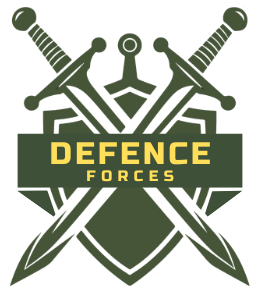The forces of defence form the backbone of any nation’s sovereignty, ensuring peace, security, and order. These forces are the first line of defense against internal and external threats. They are categorized into various branches, each playing a vital role in maintaining national integrity. Let us explore the structure, responsibilities, and significance of defense forces in detail..
Table of Contents
Key Components of Defense Forces
1. Army: The Backbone of Ground Defense
The army is the primary defense force responsible for protecting land territories. Its major roles include:
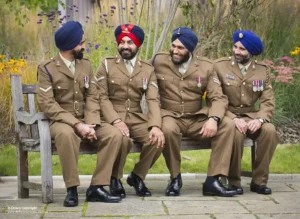
- Combat Operations: Engaging in battles and neutralizing threats on the ground.
- Border Security: Guarding land borders against unauthorized incursions.
- Disaster Relief: Assisting civilian authorities during natural disasters.
- Internal Security: Handling insurgencies and maintaining order during emergencies.
Modern armies rely on cutting-edge technology, such as armored vehicles, advanced weaponry, and communication systems, to execute operations effectively.
2. Navy: Protecting Maritime Interests
The navy safeguards the country’s interests in seas and oceans. Its core functions include:
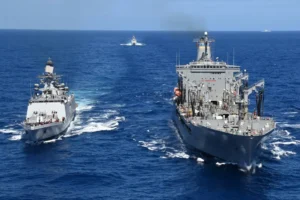
- Maritime Defense: Securing sea lanes and preventing unauthorized activities in territorial waters.
- Search and Rescue: Responding to maritime emergencies and natural disasters.
- Anti-Piracy Operations: Ensuring the safety of international shipping routes.
- Strategic Deterrence: Operating submarines and deploying naval assets for national security.
The navy operates a variety of vessels, such as aircraft carriers, submarines, and destroyers, equipped with state-of-the-art technology for effective defense.
Indian Coast Guard Ranks and Salary: A Complete Guide
3. Air Force: Dominating the Skies
The air force is responsible for maintaining control over a nation’s airspace. Key duties include:
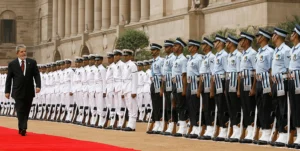
- Aerial Defense: Intercepting and neutralizing airborne threats.
- Intelligence and Surveillance: Gathering data using reconnaissance aircraft and drones.
- Logistics Support: Transporting troops and supplies to remote areas.
- Humanitarian Aid: Delivering relief materials during crises.
Advanced fighter jets, strategic bombers, and modern radar systems strengthen the air force’s ability to respond to diverse challenges.
Specialized Defense Units
1. Special Operations Forces
Specialized units are trained to handle critical missions that demand precision and expertise. These include:
- Counter-Terrorism Operations: Neutralizing terrorist threats and safeguarding civilians.
- Rescue Missions: Conducting hostage rescues in high-risk zones.
- Covert Operations: Undertaking missions behind enemy lines.
2. Cyber Defense Teams
In the digital era, cybersecurity plays a crucial role in national defense. Dedicated units protect sensitive data, monitor cyber threats, and ensure the integrity of communication networks.
3. Space Forces
Space has become a new frontier for defense operations. Space forces oversee:
- Satellite Management: Operating military satellites for surveillance and communication.
- Missile Tracking: Detecting and intercepting potential threats from space.
- Space Exploration: Researching technologies for future defense applications.
The Role of Auxiliary and Reserve Forces
1. Paramilitary Forces
Paramilitary groups support regular forces in ensuring security and law enforcement. Their roles include:
- Border Control: Patrolling and protecting international boundaries.
- Disaster Management: Assisting in rescue operations during emergencies.
- Counter-Insurgency: Managing internal conflicts.
2. Reserve Forces
Reserve personnel are trained civilians who can be called upon during crises. They bolster the primary forces during wars, natural disasters, or large-scale emergencies.
Advancements in Defense Technology
1. Artificial Intelligence (AI)
AI is revolutionizing defense systems with applications such as autonomous drones, predictive maintenance, and real-time threat analysis.
2. Advanced Weaponry
Hypersonic missiles, smart munitions, and laser-based weapons enhance combat capabilities and precision.
3. Surveillance and Reconnaissance
Sophisticated satellites and unmanned aerial systems provide real-time intelligence, allowing forces to respond quickly to emerging threats.
International Cooperation and Alliances
Global collaboration among nations strengthens defense capabilities. Prominent alliances include:
- NATO: A collective defense agreement among allied nations to ensure security in the North Atlantic region.
- ASEAN Defence Cooperation: Promoting regional stability in Southeast Asia.
- QUAD: Focused on maintaining peace and security in the Indo-Pacific region.
These partnerships facilitate resource sharing, joint training, and coordinated strategies.
Challenges Facing Defense Forces
Defense forces face several challenges in adapting to modern demands:
- Resource Allocation: Balancing budget constraints with the need for modernization.
- Technological Adaptation: Keeping pace with rapid advancements in military technology.
- Geopolitical Tensions: Addressing evolving global threats and maintaining readiness.
- Environmental Impact: Preparing for operations in changing climatic conditions.
Conclusion
The forces of defense are vital to ensuring the security and stability of any nation. Their adaptability, advanced technologies, and relentless commitment allow them to face complex challenges effectively. By investing in modernization and fostering global partnerships, defense forces remain a cornerstone of national sovereignty.
Indian Air Force Recruitment 2025: Apply Now for Agniveervayu (Sports) Intake 02/2025

CISF Recruitment 2025: Apply for 1124 Constable/Driver & Other Posts – Check Eligibility, Salary & Selection Process
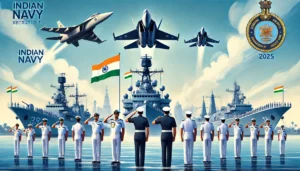
Indian Navy Recruitment 2025: Apply Online for 270 Vacancies – Check Eligibility, Salary & Selection Process

Indian Army Recruitment 2025: Apply Now for 381 Vacancies Before 05 February

Ministry of Textiles Recruitment 2025: Apply for Junior Weaver, Junior Assistant, and Other Posts

Ministry of Finance Recruitment 2025: Apply for Inspector and Assistant Positions
Recent Posts
- Indian Air Force Recruitment 2025: Apply Now for Agniveervayu (Sports) Intake 02/2025 17 February 2025
- CISF Recruitment 2025: Apply for 1124 Constable/Driver & Other Posts – Check Eligibility, Salary & Selection Process 11 February 2025
- Indian Navy Recruitment 2025: Apply Online for 270 Vacancies – Check Eligibility, Salary & Selection Process 11 February 2025
- Indian Army Recruitment 2025: Apply Now for 381 Vacancies Before 05 February 19 January 2025
- Ministry of Textiles Recruitment 2025: Apply for Junior Weaver, Junior Assistant, and Other Posts 19 January 2025
